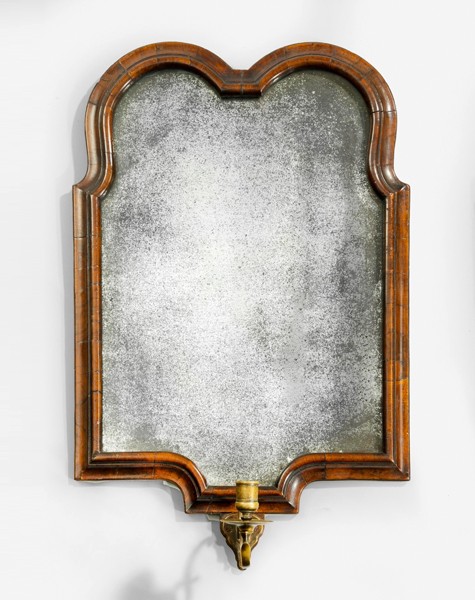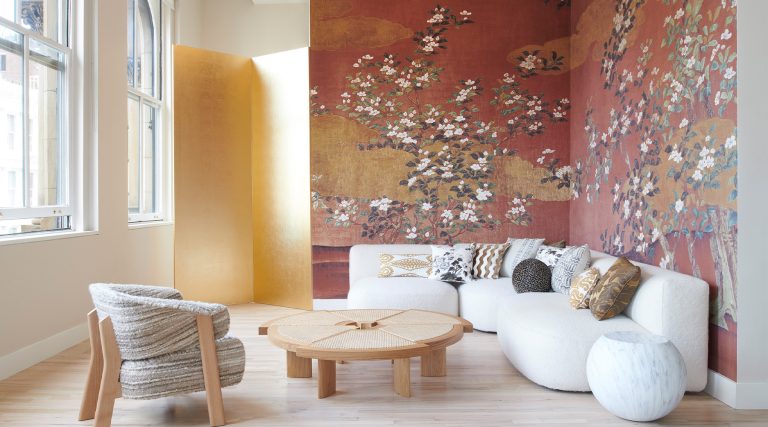
January 19, 2015“We like to sell what we know: fine 18th- and 19th-century English furniture,” says Lennox Cato of his 18-year-old gallery in Edenbridge, an hour’s drive outside London. Top: Lennox Cato Antiques and the Edenbridge Galleries.
Lennox Cato is a classic English antiques dealer: passionate, knowledgeable and good company to boot. Working out of his eponymous gallery in Edenbridge, Kent, about an hour’s drive south of London, Cato and his wife, Sue, have specialized in high-quality 18th- and 19th-century English antiques for nearly 37 years. Highly respected, he sits on the governing body of the British Antique Dealers’ Association (BADA) and exhibits at the BADA fair every March as well as at the London Association of Art and Antiques Dealers fair (LAPADA) held in September.
But Cato’s path to becoming a dealer was anything but traditional. He comes from a West Indian family that moved to London from Grenada before he was born. When he was two months old, he and his older brother, Lincoln, were adopted by Gladys and Dicky Compton, who was a legendary antiques dealer in Brighton, a popular seaside resort on the country’s south coast. Cato, who kept his birth name, describes Compton as a “wheeler dealer” well versed in the “rough and tumble” of the antiques trade, in which bartering was a sport and survival depended on “making a profit by the end of the week.”
“From him, I learned how to think on my feet,” says Cato, who started on his own as a teenager to buy antiques from private families — “gold, silver, jewelry, furniture, anything, really” — and sell these pieces to other dealers. When he was 16, he left school to pursue the trade full-time, and, the next year, when his father retired, he set up shop in Brighton.

At the gallery, rare 18th- and 19th-century antiques abound, including a marble bust, from the workshop of Antonio Canova (left), ca. 1800; a circular Regency bookcase, ca. 1810; and a carved giltwood girandole mirror (hanging on the back wall), ca. 1835.

A corner of Cato’s gallery shows off, among other treasures, a Wedgwood tea set, ca. 1885; a mahogany side cabinet, ca. 1830; and, hanging above it, Luigi Gainella’s framed gouache, Antique Grand Tour Temples at Paestum, ca. 1800.
He had plenty of early success, owing, he says, to the fact that “Brighton was a seaside town that attracted tourists and collectors. Some ninety percent of my customers then were Americans.” But fashion changed in the late 1980s. “The market for English antiques shrank, even here in England,” he says. “Nonetheless, we decided to stick to what we know best.” Sue adds: “We like to sell what we know: fine 18th- and 19th-century English furniture.”
The couple remains incredibly resourceful. “You can’t just sit around; you have to create business,” he says. “You do lots of talking and listening to what people want. Then you go out and find it.”
“Lenny knows what is good,” says Clinton Howell, a New York colleague. “Even if he has a hard time locating something, he always comes up with it in the end.”
In the interest of building business, Cato bought a shop in 1997 on the high street in Edenbridge, a historic market town on the border between Surrey, Sussex and Kent. Ten years later, he purchased the building next door and named it The Edenbridge Galleries. There, he rents out space to fellow BADA and LAPADA members, specialists in 19th- and 20th-century English pictures, English and Continental antique clocks, antique Oriental and 20th-century rugs, English porcelain and pottery (Derby, Chelsea, Worcester, Bow and Coalport), 17th-century English oak carvings and local inlaid-wood pieces called Tunbridge Ware. He explains that by adding the galleries he hopes to offer “one-stop shopping.”
These days, he says, “the business is changing, but you have to embrace change; you can’t ignore it.”
He’s been changing and adapting for some time. To wit: Cato and Sue are self-taught decorators. “Our clients began asking us for advice in the mid-nineteen nineties,” he says. “So we’ve been furnishing houses for some time.”
He’s also a crack soccer player. In 2002, Cato came up with the idea of an annual charity football match between dealers and auctioneers in Roehampton, a suburb southwest of London. It benefits The Haven, a U.K. charity that supports women with breast cancer. The match continues today, now named The Lennox Cato Cup.
“The match is a great way of getting the two sides of the antiques industry together socially,” Cato says of the event, which to date has raised well in excess of $100,000. “We seldom mix outside of business otherwise.”
He is almost entirely discreet about his customers, but he will confirm the names of a few — and big ones, too: Oprah Winfrey; Brazilian-born philanthropist Lily Safra; the Crown Prince of Thailand; and Irina Abramovich, the ex-wife of Russian billionaire Roman Abramovich.
Asked to name the favorite piece he has sold, he mentions a 19th-century mahogany drum table attributed to George Bullock, one of the most important Regency furniture-makers in London. Also known as a rent table, a drum table is a large, round table with drawers beneath the top for storing records. A showpiece that is also practical, it is often found in fine English libraries.
He was vetting London’s Olympia International Art & Antiques Fair years ago when he first spotted the table in the back of another dealer’s booth. His fellow vettors paused for lunch, but he didn’t. He went back and bought the table and then put it front and center at his own stand, confident it was likely by Bullock. “It was five feet in diameter, larger than normal, in high Regency style, with ebony stringing, a leather top and lion-paw feet,” Cato recalls. “It was both stylish and of fabulous quality.”

A 19th-century Saxon Flower pattern Copenhagen service, along with Regency-period cut-glass table lights and decanters, sit atop a George III mahogany dining table. In the back is a walnut Dutch commode chest of drawers, ca. 1840.
When the fair opened, “It was like bees around a honey pot,” he says. “Everyone wanted the table.” He got calls from two New York dealers who were in London to attend the fair, asking if he had “anything special” they should see. “Get here quick,” he told them.
But they were too late. He had already sold it for what he refers to now as “a serious amount of money” to one of the most prestigious furniture dealers in London. The gallery undoubtedly went on to sell the table for a good deal more, but Cato was flattered that such a serious London firm would buy from him. The sale confirmed he had a good eye.
Asked if he thinks there is any disadvantage to being a black dealer in an industry overwhelmingly populated by white men and women, he says, “Yes and no. At least people don’t forget me.” That would be unlikely, regardless of his skin color, especially since Cato has been a furniture specialist on the BBC’s Antiques Roadshow for the last decade. “People come up to me in restaurants to say hello,” he says with evident pleasure. He’s philosophical about his fame, too, however, concluding: “Let’s be honest. It’s not quite like being married to George Clooney.”
Talking Points















